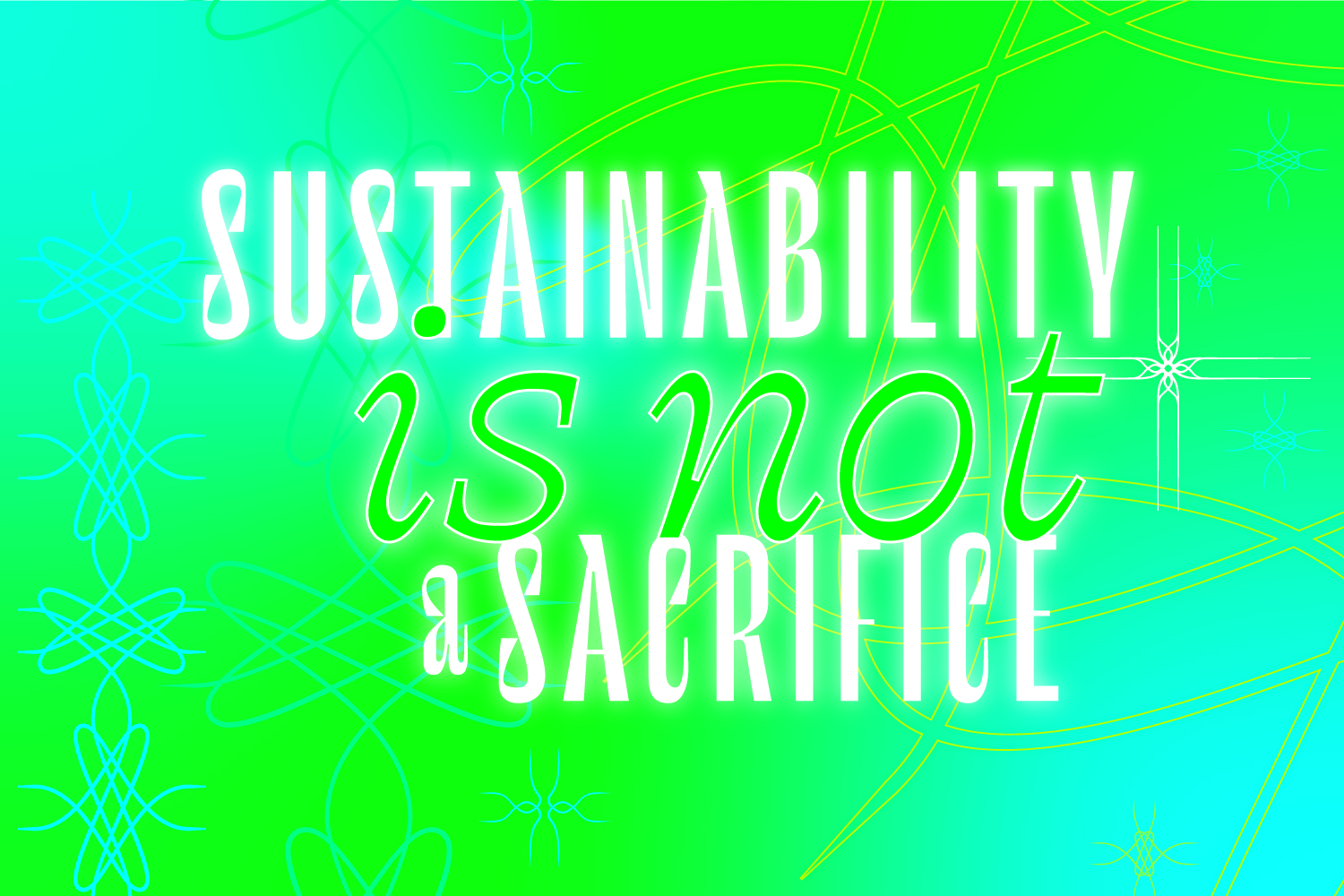The truth is that sustainable fashion is still considered taboo among a large majority of people. The notion of sustainability often calls to mind images of expensive bohemian style clothing, which is often regarded as “not stylish” or “not fitting of the aesthetic.” Fortunately for us, technology, and designers who care about sustainability’s three pillars, can debunk this myth.
Let’s start off by saying that you don’t need to sacrifice style for sustainability. You actually CAN have both. Shocking, I know, but it turns out that it is relatively easy to achieve fair trade, save the environment, AND benefit the economy all at once! The best part is you can look damn good doing it.
There are many ways that you can achieve “sustainability.” You can buy locally, check the material makeup of clothes, and do research on what stores support sustainability. There are millions of different ways of doing it. The problem is that sustainability in the public eye, often among celebrities, has garnered comments deeming this environmentally friendly alternative as “unstylish.” It sucks, I know, but such is the way that big fast fashion corporations survive, smearing the name of well-intended clothing under the guise of its price, deeming it unattainable. Even if they do introduce sustainable collections, often they pair wild prices with bad designs, making it seem like a luxury that you can’t afford and don’t want to buy.
When speaking with a few peers about this year’s MET gala looks and noticing that the most horrifying ones were sustainably made, our hearts were crushed. We’re sorry, Camila Cabello, but we are looking at you. That dress was poorly tailored and ill-fitting. Our most accurate comparison is a last-minute midterm project that Prabal Gurung somehow forgot about until the night before, handing in whatever he could complete during a frantic all-nighter. Mr. Gurung, I have seen your work, and I know what you can do. Why did you do sustainability so dirty l? Sustainability may be at the forefront of the garment’s message does not mean that craftsmanship is suddenly thrown to the wayside.
We need to change the way our society sees sustainability. It’s not a “lifestyle,” or a “luxury.” It’s the way of living we need to incorporate into our current lifestyle if we want to see this world last longer. At the end of the day, the choice is yours. It is time to decide whether you wish to keep this outdated perception of sustainability or choose to evolve with it. If we take just a second to look at brands that achieve this goal and show proof and transparency that they do so ethically, we would finally be able to see that the intersection of style and sustainability is not only possible but probable too!
Some people believe that sustainable fashion can be expensive, but I can’t argue that there are brands that sell sustainable clothing at a very expensive rate. Right now, the materials do have a high price, but sustainability can be achieved economically by thrifting, or by one of my favorite ways, viewing your shopping as investing. Buying a garment at $5.99 that lasts a month is not a great deal. An H&M T-shirt will last for a shorter time than a 100% organic T-shirt. Sure, it might be a bit more expensive, but you’ll end up spending less in the long run. Investment is key in a sustainable fashion. Invest in basics and you will see how your life will change. Take care of your clothes and think twice when making a purchase.
Sustainability does not mean expensive, and it’s not a synonym to sacrifice either. It means thinking and acting responsibly. That depends on us, the consumers. If we want to see a difference, then we need to make that difference by showing the big companies what we want. Only then will we see change, and we will be able to appreciate lower costs for sustainable items, making it more accessible.
Written by Alessia Giha
Graphic by Riley Gagne

